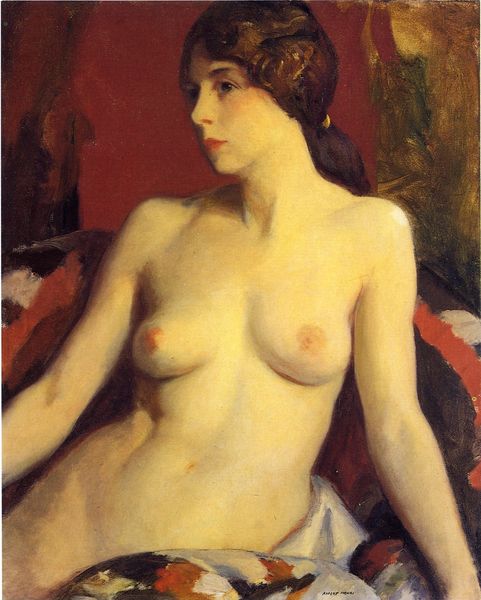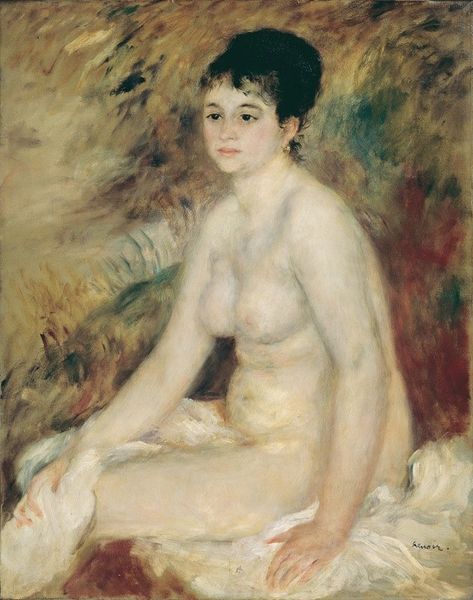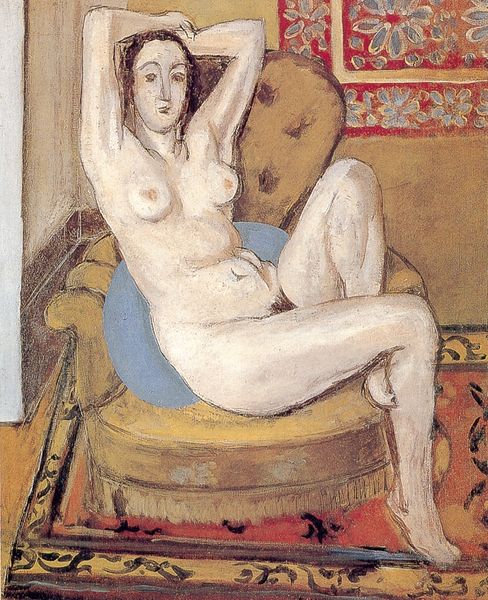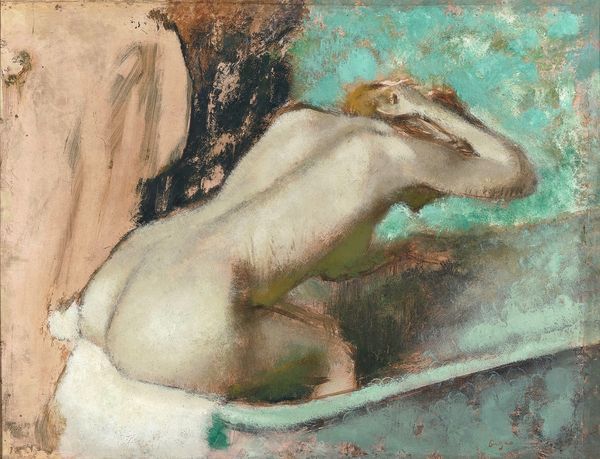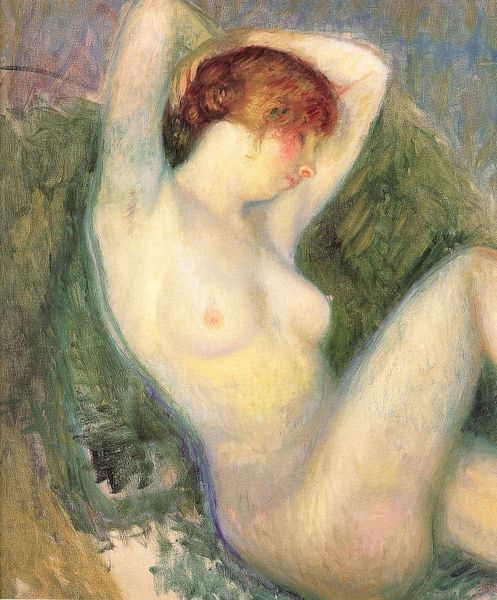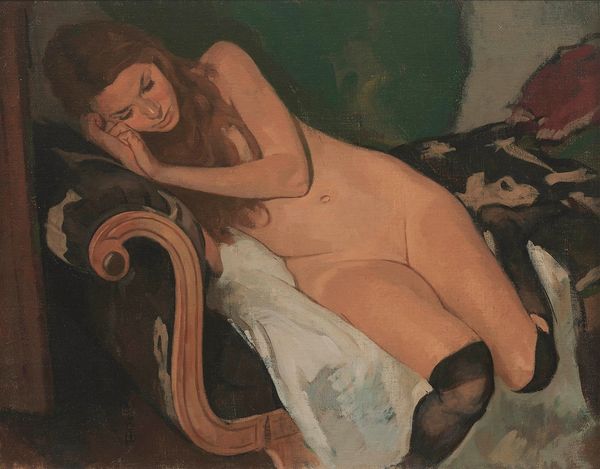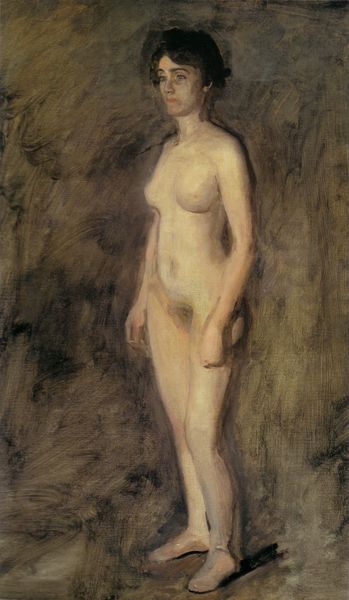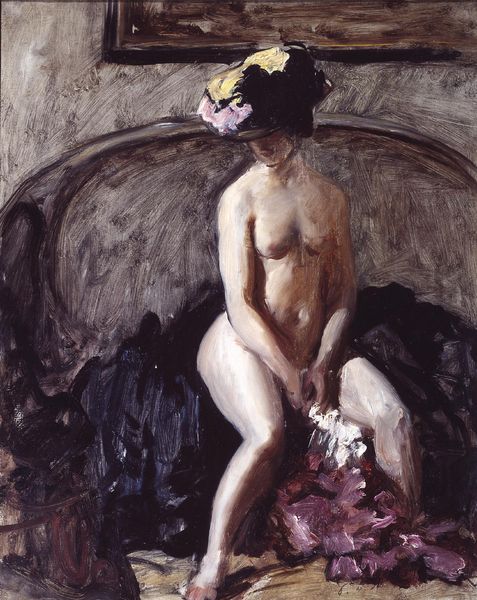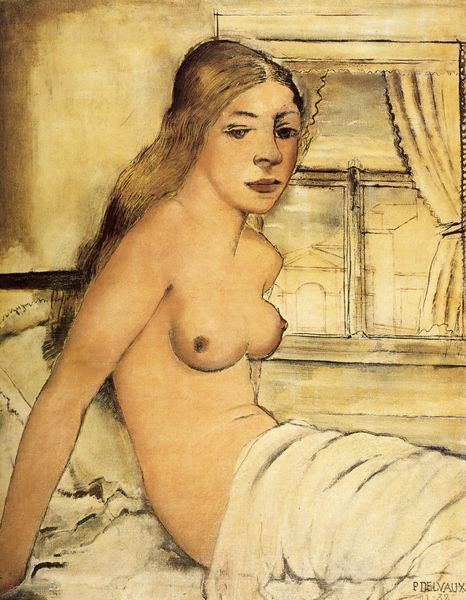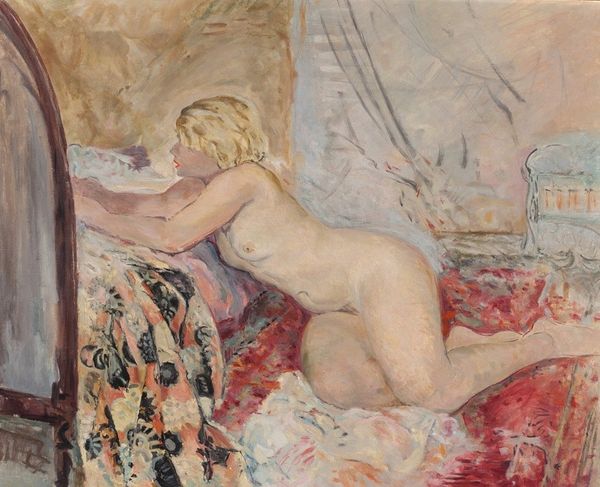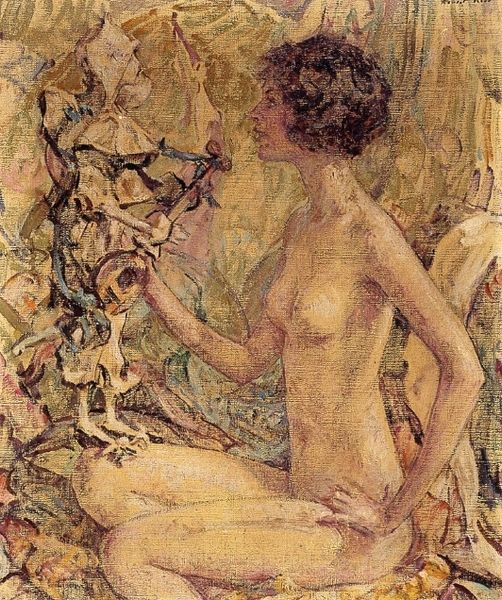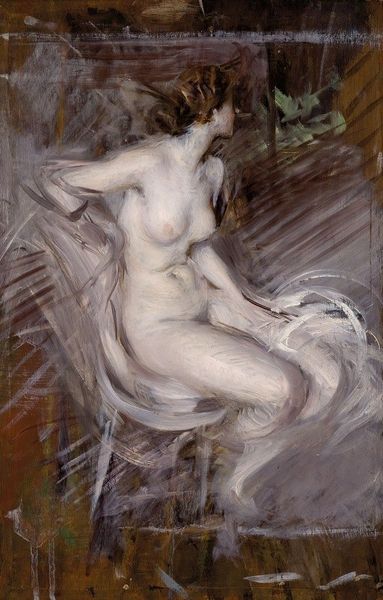
Dimensions: 81 x 64.5 cm
Copyright: Public domain
Curator: Immediately, I’m struck by its hazy and dreamlike quality. It feels incredibly intimate, almost voyeuristic. Editor: Édouard Vuillard, a leading figure in the Intimist movement, created this painting, titled "Seated Nude," in 1903. As the title suggests, it depicts a nude woman seated in what seems to be a domestic interior. Considering its context, I wonder how this private moment translates into a public image. Curator: Vuillard was so attuned to the surfaces of things. It's interesting to see the brushstrokes really evident in the depiction of skin and fabrics, sort of collapsing the figure into its environment, dissolving those clear boundaries between the model and the room. How do you think the contemporary critics viewed its style? Editor: Considering its time, the painting offered both challenges and echoes of established traditions. On one hand, the intimate, informal portrayal of the female nude moved away from grand, idealized representations seen in academic art, marking Vuillard as progressive. On the other, nude paintings have deep art-historical roots, often tied to themes of beauty and vulnerability. But the work's presence within private collections allowed its presence in a more controlled, and potentially exclusionary environment. Curator: Yes, it's also about production, isn't it? To really consider Vuillard, we should discuss how he achieved this visual effect through the material aspects of painting: the weave of the canvas visible through thin layers of oil paint, a strategic use of underpainting creating areas of shadow and light, which almost brings out a three-dimensional view of her. It brings us face to face with its facture. Editor: Absolutely, and these factors, consciously controlled, bring with them implications for a viewer. How does the art market function? Does it emphasize the importance of original creation or wider consumption? Ultimately, "Seated Nude" reveals a slice of fin-de-siècle social and art world dynamics through its quiet composition and its intimate tone. Curator: Agreed. Seeing the work afresh provides insight not just to one man’s practices but the production and the appreciation of its materiality. Editor: Precisely, the dialogue with paintings like this lets us expand our views about what art meant then, and now.
Comments
No comments
Be the first to comment and join the conversation on the ultimate creative platform.

